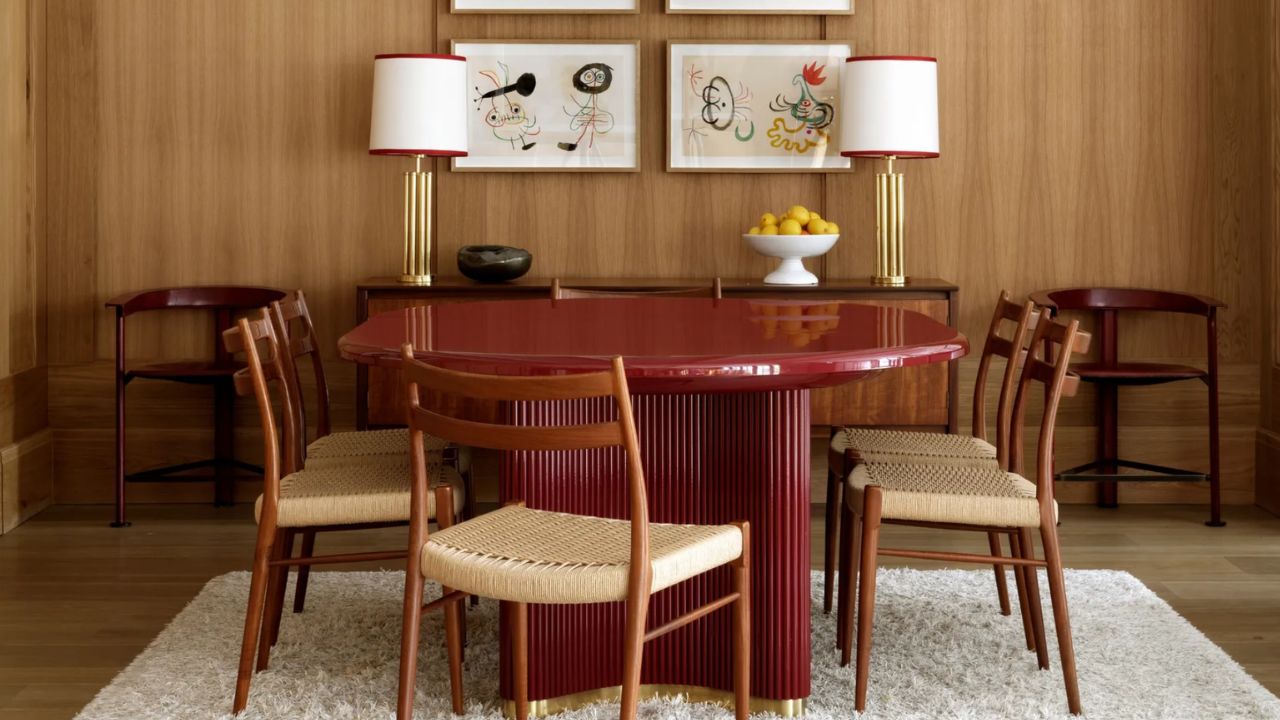
At this point, we all know the power a touch of red can have in a space. But in 2025, we all became a bit bolder, and that touch of red has become much bolder with the “Red Table Trick”.
The “Red Table Trick”, as Livingetc puts it, has become the signature of all the most luxurious interiors, and it involves just one adjustment.
“The red table trick has suddenly become ubiquitous in all the most interesting projects that pass across my desk,” said Hugh Metcalf from Livingetc. And as often happens once someone shows you something, I started to see it everywhere.
While the narrative about buying larger furniture typically says you should opt for something neutral that lasts through all seasons, this dining table trend dares you to do something different. Choosing colors doesn’t have to make your space feel dated, especially when done well, and to understand this, I spoke with designers to get their top tips on the “Red Table Trick.” Here’s what they said, according to Livingetc.
Although it’s natural to draw parallels between this trick and the viral “red table trick,” Hugh Metcalf points out that it’s more likely that “red tables already existed in the brand’s launch plans, and designers had been researching them long before the idea became popular.”
Instead, he attributes it to a movement we now call “High Luxury.” “It’s the idea that the most discerning decorators among us don’t need to rely on the safety of neutral tones and minimalist design because we know we have the good taste to keep bold choices from veering into extravagant territory,” he says.
Choosing a red table is a big bet, but one that says, “I’m confident enough to know this will work.”
As for why we chose red, a typically fiery and even irritating shade, Regina Pérez Montemayor, lead designer at Montemayor Designs, says: “In design and art, red naturally attracts attention because it has the longest wavelength of all colors, making it appear more vibrant and intense to the human eye.”
According to color psychology in interior design (and beyond), red is often associated with passion, energy, and enthusiasm, which can evoke an emotional response. Historically and culturally, red symbolizes strength, power, and even danger — giving a sense of intrigue and boldness to everything it highlights.
“These combined factors make red an alluring and dynamic choice in any visual space,” says Regina.
Although introducing the “Red Table Trick” into your own space might seem like a daunting task, styling this bold touch is not as difficult as it seems. In fact, you can style it just like any other table.
Interior designer Claire Sá, director of the London-based architecture and interior design studio DE ROSEE SA, says: “While it has a bold impact, a red dining table pairs perfectly with a variety of different aesthetics, especially neutral color schemes and various wood tones.”
In minimalist spaces, the red table instantly becomes the focal point of the dining room. So, you can easily keep the table simple and highlight the red in details such as artwork, lighting, or other decorative elements.
“I love balancing the vibrancy of a red table with natural and earthy elements,” adds Regina. “For example, in a recent dining room project, I paired a bold red table with cozy wooden chairs and anchored the space with a simple jute rug.”
In maximalist spaces, mid-century modern homes, or even Space Age-inspired designs, a red table will only continue to build the aesthetic.
And if incorporating a full dining table isn’t in your design plans, perhaps a good place to start is with a side or coffee table to spice up your modern living room ideas.
Whenever you need inspiration to transform your space from dull and uninspired to exciting and chic, looking at the latest color trends is always a good start. Where do you think the red table came from?
Stepping outside the traditional design standard and choosing something like a red table could be just the detail your space needs to look inspired and stylish.
Source: Livingetc
This content was created with the help of AI and reviewed by the editorial team.

